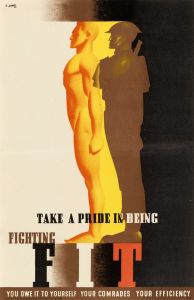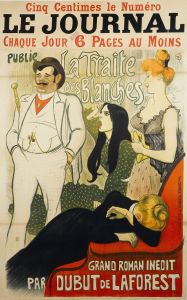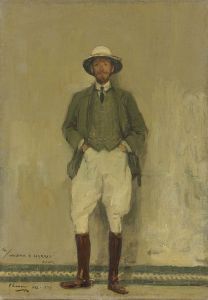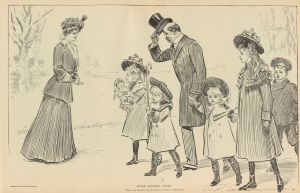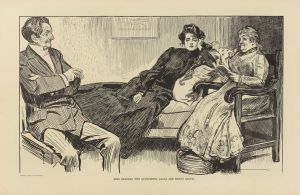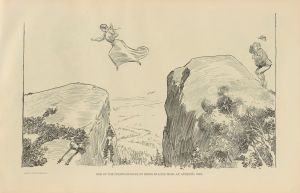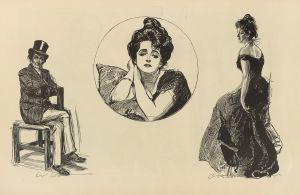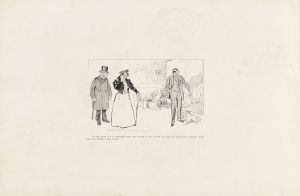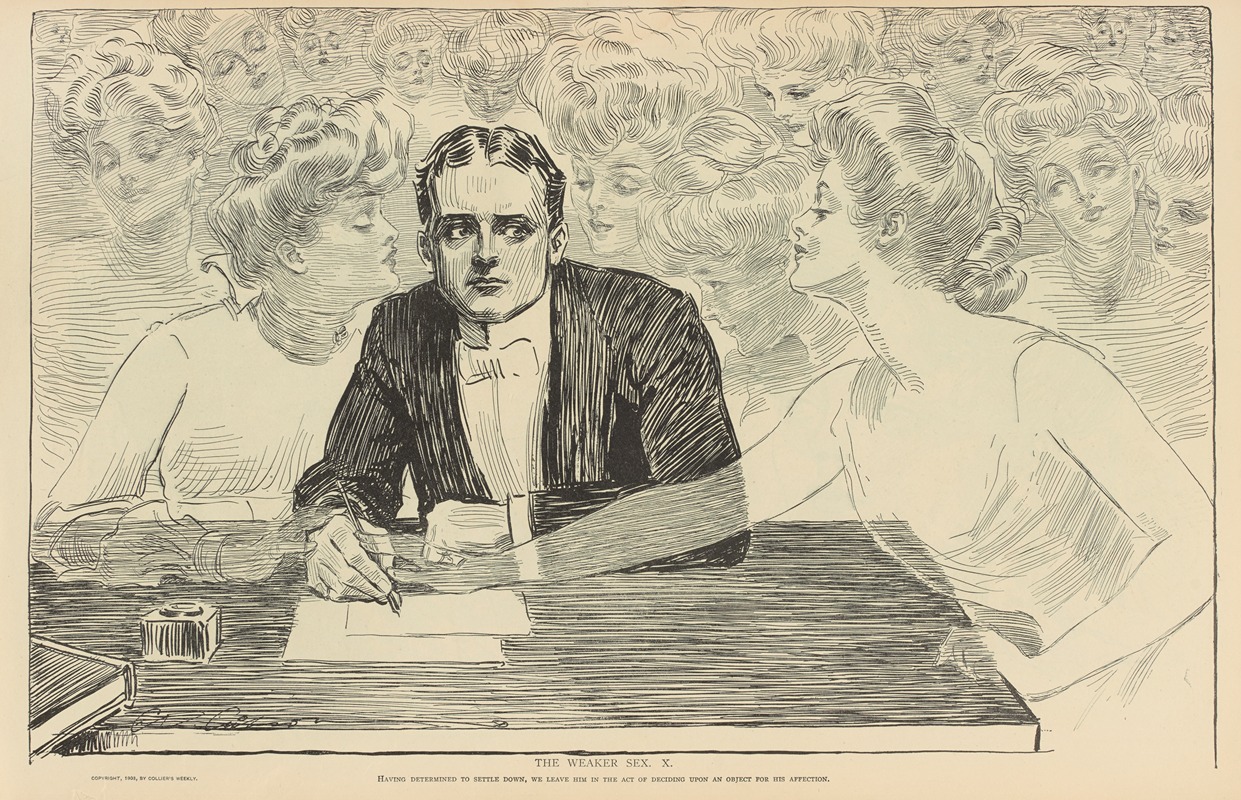
The weaker sex.—X
A hand-painted replica of Charles Dana Gibson’s masterpiece The weaker sex.—X, meticulously crafted by professional artists to capture the true essence of the original. Each piece is created with museum-quality canvas and rare mineral pigments, carefully painted by experienced artists with delicate brushstrokes and rich, layered colors to perfectly recreate the texture of the original artwork. Unlike machine-printed reproductions, this hand-painted version brings the painting to life, infused with the artist’s emotions and skill in every stroke. Whether for personal collection or home decoration, it instantly elevates the artistic atmosphere of any space.
Charles Dana Gibson was an influential American illustrator best known for creating the iconic "Gibson Girl," a representation of the idealized American woman at the turn of the 20th century. Among his many works, "The Weaker Sex.—X" is one of his notable illustrations, capturing the social dynamics and gender roles of the era.
"The Weaker Sex.—X" is part of a series of illustrations that Gibson produced, which often depicted scenes of social interaction between men and women. These works were characterized by their wit, humor, and keen observation of societal norms. Gibson's illustrations were widely published in magazines such as Life, Harper's Weekly, and Scribner's, reaching a broad audience and influencing public perceptions of gender roles.
In "The Weaker Sex.—X," Gibson employs his signature pen-and-ink style to portray a scene that humorously challenges the notion of women as the "weaker sex." The illustration typically features a group of women in a social setting, often outnumbering or outsmarting the men present, thereby subverting the traditional power dynamics expected in such interactions. This theme was a common thread in Gibson's work, as he frequently depicted women as strong, independent, and intelligent, often in contrast to the men around them.
Gibson's work, including "The Weaker Sex.—X," played a significant role in shaping the cultural landscape of the early 1900s. The "Gibson Girl" became a cultural icon, representing a new, modern woman who was confident, fashionable, and socially active. This image contrasted with the more demure and domestic ideals of femininity that had previously dominated American society. Through his illustrations, Gibson contributed to the evolving conversation about gender roles and women's rights during a period of significant social change.
The popularity of Gibson's illustrations can be attributed to their ability to capture the spirit of the times. The late 19th and early 20th centuries were marked by significant shifts in social norms, including the women's suffrage movement and changing attitudes towards women's education and employment. Gibson's work resonated with audiences because it reflected these changes while also providing a humorous and often satirical commentary on the ongoing gender debates.
While "The Weaker Sex.—X" is just one example of Gibson's extensive body of work, it exemplifies his talent for using art to comment on and influence societal attitudes. His illustrations remain a valuable historical resource for understanding the cultural dynamics of his time, offering insight into the complexities of gender relations and the evolving role of women in society. Through his art, Charles Dana Gibson left a lasting legacy that continues to be studied and appreciated for its artistic merit and cultural significance.





